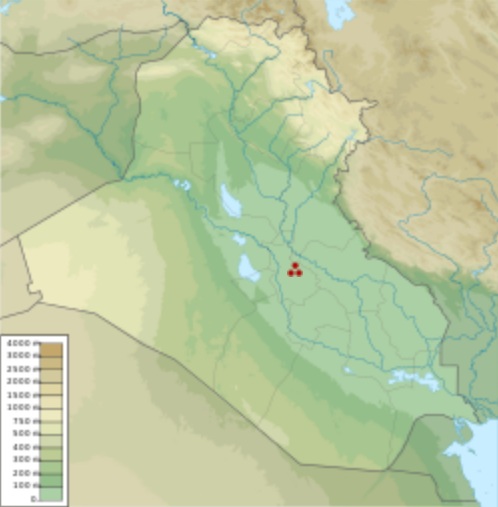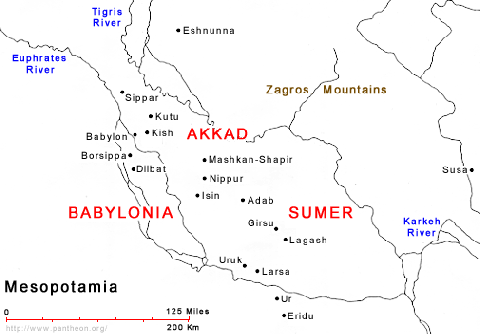
| KUTHA
Kutha, Cuthah, Gudua shown within Iraq
Kutu also known as Kutha Location : Babil Governorate, Iraq
Region : Mesopotamia
Coordinates : 32°45'36.1 N 44°36'46.3 E
Type : tell
Site notes :
Excavation dates : 1881
Archaeologists : Hormuzd Rassam
Kutha, Cuthah, Cuth or Cutha (Sumerian: Gudua), modern Tell Ibrahim, formerly known as Kutha Rabba, is an archaeological site in Babil Governorate, Iraq. Archaeological investigations have revealed remains of the Neo-Babylonian period and Kutha appears frequently in historical sources such.
History
of archaeological research :
Kutha
and its environment :
Kutha
in textual sources :
The result was a mixture of religions and peoples, the latter being known as "Cuthim" in Hebrew and as "Samaritans" to the Greeks. Kutha is also the name of the capital of the Sumerian underworld, Irkalla.
In the Assyrian inscriptions "Cutha" occurs on the Shalmaneser obelisk, line 82, in connection with Babylon. Shulgi (formerly read as Dungi), King of Ur III, built the temple of Nergal at Cuthah, which fell into ruins, so that Nebuchadnezzar II had to rebuild the "temple of the gods, and placed them in safety in the temple". This agrees with the Biblical statement that the men of Cuthah served Nergal. Josephus places Cuthah, which for him is the name of a river and of a district, in Persia, and Neubauer says that it is the name of a country near Kurdistan.
The so-called "Legend of the King of Cuthah", a fragmentary inscription of the Akkadian literary genre called narû, written as if it were transcribed from a royal stele, is in fact part of the "Cuthean Legend of Naram-Sin", not to be read as history, a copy of which found in the cuneiform library at Sultantepe, north of Harran.
Sumu-la-El, a king of the 1st Babylonian Dynasty, rebuilt the city walls of Kutha. The city was later defeated by Hammurabi of Babylon in the 39th year of his reign.
Ibn Sa'd in his Kitab Tabaqat Al-Kubra writes that the maternal grandfather of Abraham, Karbana, was the one who discovered the river Kutha.
In The Last Pagans of Iraq: Ibn Wahshiyya and His Nabatean Agriculture, Jaakko Hämeen-Anttila says :
"One might also mention the rather surprising story, traced back to 'Ali, the first Imam of the Shiites, where he is made to identify himself as “one of the Nabateans from Lutha” (see Yaqut, Mu'jamIV: 488, s.v. Kutha). It goes without saying that the story is apocryphal, but it shows that among the Shiites there were people ready to identify themselves with the Nabateans. Thus it comes as no surprise that especially in the so-called ghulàt movements (extremist Shiites) a lot of material surfaces that is derivable from Mesopotamian sources (cf. Hämeen-Anttila 2001), and the early Shiite strongholds were to a great extent in the area inhabited by Nabateans.
"Yaqut also notes, "the identification of Kutha as the original home Shiah Muslims believe to be the Abrahamic roots of Islam. Yet the identification of Kutha, and by extension also Abraham, with the Nabateans is remarkable."
Al-Tabari says in The History of Prophets and Kings that the prophet Ibrahim was the son of his mother Nuba or Anmatala, who was the daughter of Karita who dug the river Kutha, named after his father Kutha.
Source :
https://en.wikipedia.org/ |

